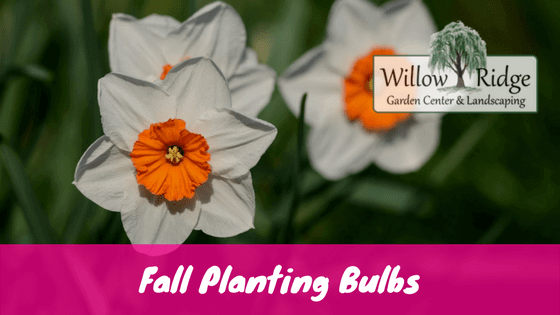Fall Planting Bulbs For East Tennessee
Fall planting bulbs are some of the easiest flowers to grow. Planted in the fall, these bulbs will provide color and flowers the following spring. Crocus, hyacinths, daffodils, and tulips are all bulbs that we plant in the fall in East Tennessee. They need the cool of winter in order to bloom and also need time to establish a healthy root system. Plant them when temperatures are below 65 degrees either in the ground or in containers.
Buying Fall Planting Bulbs
You may purchase your bulbs now when selection is prime, but store them in a cool, dry location prior to planting. Storage can be an open paper bag in a dark place such as a closet. When choosing healthy bulbs, look for firm, not mushy or soft, as that signals a dead bulb. Mold on the outer skin that can be brushed off will not harm the bulb.
Many Fall planting bulbs will naturalize and return to bloom each spring. Daffodils, Crocus, Hyacinths, Muscari, and Allium are some of the varieties. Tulips are not native to this country and will not return the following year. Treat them as annuals, pull them up and replant the following fall. If you have a deer and rabbit problem, plant “distasteful” bulbs such as Daffodils, Scilla, Snowdrops, and Hyacinths. Bulbs bloom and different times throughout the spring, so plant different types to extend the bloom time.
How To Plant Fall Bulbs
When planting bulbs, a little soil preparation will ensure success. Like many plants, bulbs prefer good drainage and do not like wet feet. Steer clear of low lying areas that collect water and mix soil conditioner (fine ground pine bark) with the clay soil that you remove from the planting hole. Adding Bone Meal or Super phosphate to the mix will help the bulb develop better roots and blooms. The depth of the hole depends on the size of the bulb, dig 3 times the diameter. So larger bulbs are usually planted 8 inches deep and smaller ones are 5 inches deep. Always place the pointed side up when planting. If planting in a container, you may layer larger type bulbs (Daffodils) beneath smaller ones (Crocus). Cover with soil and water. Usually winter rains will take care of watering until spring. We suggest planting bulbs in clumps to create more depth to a planting, giving it a more natural look. Daffodils, Scilla, Snowdrops, and Crocus are particularly showy when planted in mass.
Spring Maintenance For Bulbs
When your bulbs are finished blooming, leave them alone to die back naturally. The bulb needs this foliage as long as possible to reserve nutrients for next year. When the leaves are totally brown, remove them. Plant bulbs among perennials whose foliage returns in Spring and will hide the dying foliage of the bulbs.
Don’t miss out on the joys of Spring flowering bulbs. They are exciting to see emerging after a long winter and will add early color to a Spring garden. Crocus poking through the melting snow, sunny yellow Daffodils on a chilly March morning, or fragrant hyacinths on that first warm breeze; these are the glories of bulbs. The selection is best in September so get your Garden Center soon!

